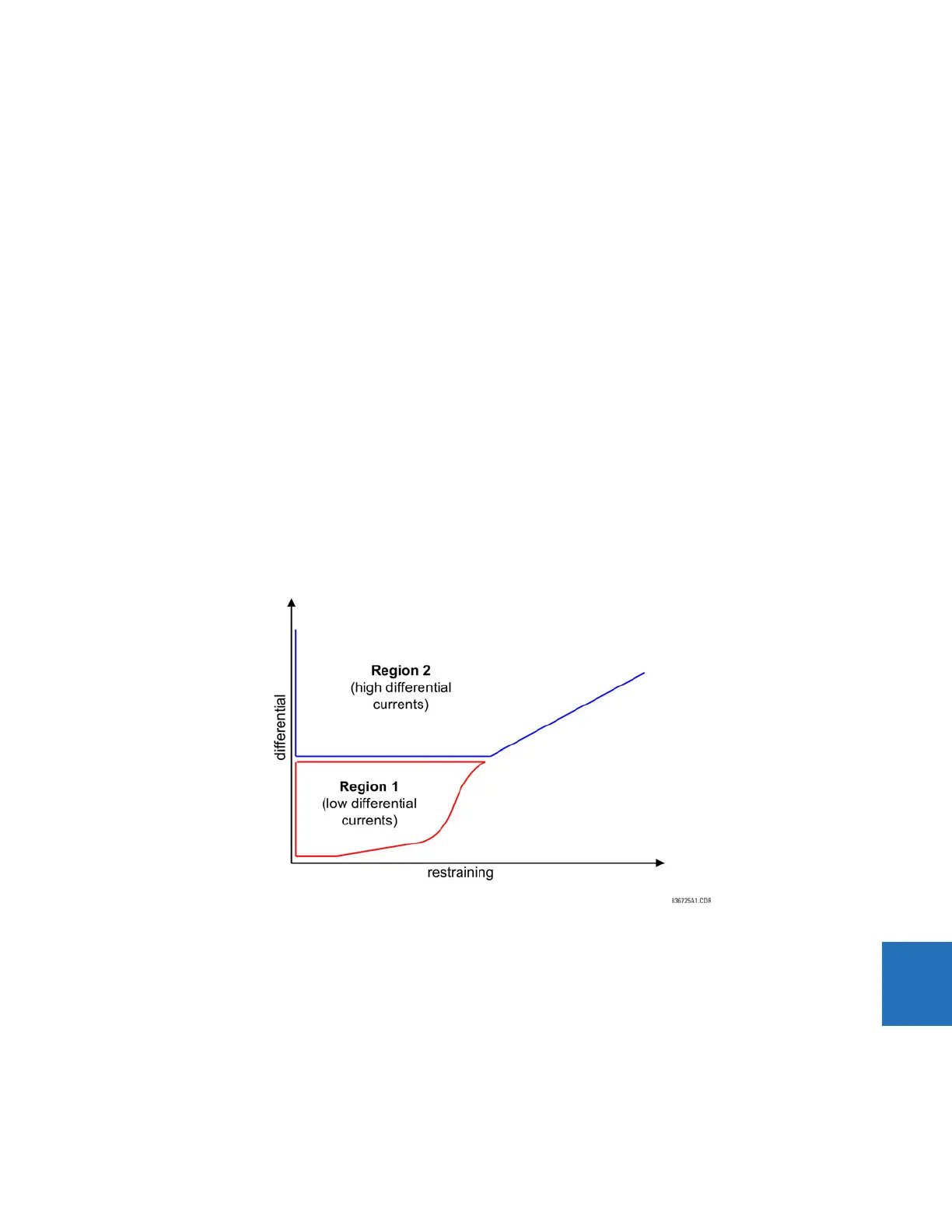CHAPTER 9: THEORY OF OPERATION DIFFERENTIAL PRINCIPLE
B90 LOW IMPEDANCE BUS DIFFERENTIAL SYSTEM – INSTRUCTION MANUAL 9-5
9
•1A CT: 6.0 kA
• 1B CT: 7.5 kA
• 1C CT: 5.0 kA
• 1D CT: 13.0 kA
• 1E CT: 8.0 kA
•1F CT: 9.0 kA
As having the lowest primary current guaranteeing operation without saturation, the CT associated with the 1C input is
most exposed to saturation. During an external fault on the 1C circuit, the 1C CT carries the fault current contributed by
potentially all the remaining circuits. The fault current is higher than any contributing current, and therefore, the current of
the 1C CT becomes the restraining signal for the biased differential characteristic for external faults on the 1C circuit.
Consequently, the higher breakpoint of the differential characteristic (
HIGH BPNT) needs to be set no higher than 5000 A,
where 1000 A = 5 pu (1000 A is the base unit as outlined in the previous the example).
The same approach applies to the setting of the lower breakpoint,
LOW BPNT.
9.3.3 Enhanced security
To enhance the performance of the B90, the differential characteristic is divided into two regions having diverse operating
modes, as shown in following figure.
The first region applies to comparatively low differential currents and has been introduced to deal with CT saturation on
low-current external faults. Certain distant external faults can cause CT saturation due to extremely long time constants of
the DC component or multiple autoreclosure shots. The saturation, however, is difficult to detect in such cases. Additional
security via the “directional check” is permanently applied to this region without regard to the saturation detector.
Figure 9-3: Two regions of differential character
The second region includes the remaining portion of the differential characteristic and applies to comparatively high
differential currents. If, during an external fault, the spurious differential current is high enough so that the differential-
restraining current trajectory enters the second region, then saturation is guaranteed to be detected by the saturation
detector.
The B90 operates in the 2-out-of-2 mode in the first region of the differential characteristic. Both differential and
directional principles (Differential Principle and Directional Principle) must confirm an internal fault in order for the biased
differential element to operate.
